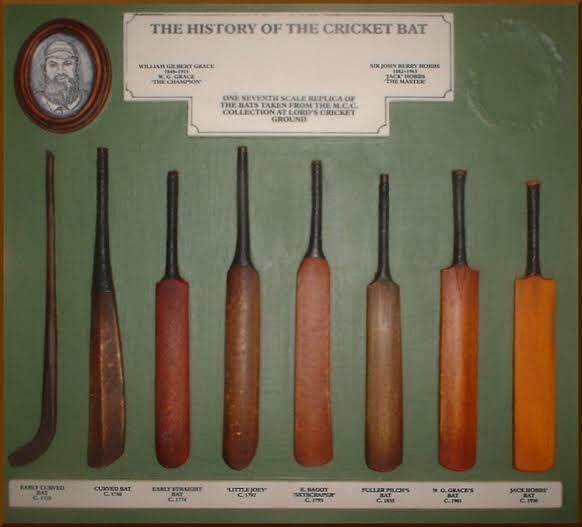How 'Cricket' got its name and where it started
Well, for beginners, we all do know that modern-day cricket evolved and emerged from England where a bat and a ball was used from either end. However, do you know that cricket first originated long before that, in the dark ages? In fact, some say, soon after the age of the Roman Empire in Europe.

The game that is revered and liked around the world - Cricket was in fact invented in Northern Europe, not a place you would associate with the game. Widely known as England’s summer sport, cricket is now played all over the world, from West Indies in the American continent to Australia in Oceania.
Interestingly, its name came from the Middle Dutch word, “Kricke,” which simply means a ‘stick or a staff.’ The reason that it is widely known to have originated in the Netherlands is England’s close relationship with the country, with them also said to have had good trade connection. It is exactly there, between South-east England and Flanders, the first use of the word kricke was used. Since then, it has made the distance and travelled around the world before it was refined as ‘cricket,’ which is used in the modern-days.
The first direct reference to the game itself is said to be as early as in the 13th century, with its first reference in court case coming in 1598. In the 1598 case, the game was referred to as ‘krekket’ which is close to the modern-day use of the word.
The earliest form of the game was more or less close to modern-day hockey, in terms of both the bat and the ball used to play the game. The bat had a slight curve towards its end, with a long grip for players to hold at the top, similar to a hockey stick. However, its true origin is still a mystery, with the game being played on relatively short-grass with the ball rolled underarm along the ground until a major portion of the 18th century.
On top of all of this, there was no protective equipment of any kind - helmets, pads or gloves for that fact. With just two stumps and bail, the ball was rolled underarm on the ground with the purpose of getting the batsmen out. The reason the bat was in the curved shape is true to the way cricket was played, with the batsmen needing to make a connection on the ground.
Cricket’s earliest form:
Cricket is also the world’s most popular sport after football, which incidentally was also founded by the United Kingdom. From 1611 to 1725, there were at least thirty matches that have been organised between recognised teams. And, if you ever find yourself watching a game of ‘village cricket,’ don’t laugh as it only gave cricket the room for its earliest form in history. In 1622, a case at Boxgrove has the earliest reference of a cricket bat, with it first called as ‘batt,’ thanks to the coastal smugglers in Kent and Sussex. It was known as a staff in most of the other counties before the term ‘bat,’ found itself etched.
During the reigns of Charles 1, the game increased in popularity, spreading across the boundaries in the United Kingdom, especially in London. The game served as an opportunity to get away from the wrath of the dangerous gambling addiction in the country, especially for the factory and trade workers.
Cricket was set to be evolved in multitude in the 18th century, mainly because of the plenty of lands available in the form of fields. The first known game of cricket was in 1709, where Kent played London in a game. And, next to that encounter, in 1728, Kent met Sussex. The first rules of the game, however, can be dated back to 1744, which was later amended to 1774.
How did cricket spread to other countries?
Arthur Haygarth’s book ‘Scores & Biographies, Volume 1,’ has the earliest mention of cricket played outside the boundaries of the United Kingdom is in 1676. In 1676, the book reveals that a diarist called Henry Tonge was part of the British Empire’s mission at Aleppo (modern-day Syria) where at least forty of the English left the city for recreational purposes. And, it was reported that they played ‘krickett’ there which is also one of the oldest mentions of cricket outside its origin.
The game was also introduced to North America via their English colonies just after it was found in Aleppo. The rules of the game in America were formalised in 1754, which only means that the game has to have been brought before rules were formalised. Between 1709 and 1712, William Byrd, owner of the Virginia plantation Westover, had noted a game of cricket being played. The first public report of a cricket match was in 1751, in North America, when the New York Gazette reported a match between London XI and New York City XI.
On the other hand, in India, it was largely due to the Britishers' presence in the country before India gained independence. The British brought cricket in the country in the 1700s, with the first game being played in 1721 between English sailors and East India Company at Kutch. It took several years after the first game for cricket to catch up in the country, with Calcutta cricket club being set up in 1792. Another cricket club was formed in 1799 at Seringapatnam in South India. The First Indian recognised club was in 1848, named as Parsee Oriental Cricket Club, where cricket was played.
And, talking about Australia, cricket was picked up by the Australian soldiers who were in the British shores. The first incident of a cricket game was in 1803 in Sydney and a report later suggested that cricket was already well established, thanks to the soldiers. The first reported tour, however, was in 1861-62, organised by the catering firm of Spiers and Pond as a private enterprise. The team contained players from the English county, Surrey and with some local efforts, it went ahead. However, it was only in 1868 Aboriginal cricketers became the first team to tour England and play cricket in their own backyards.
The last time someone took a count of countries playing cricket it was 104 members, 12 of them playing in Test matches, with the other 94 being referred to as associate nations/members.

Comments
Sign up or log in to your account to leave comments and reactions
0 Comments